JSAUX is the current talk of the town in the world of Steam Deck docks. Here’s a company that’s offering high-quality alongside affordable prices across different brackets.
But are they any good? How well do they work in docked mode? I’ve been using three different JSAUX Steam Deck docks for the past three months and this is what I made of them.
JSAUX Steam Deck Dock Overview
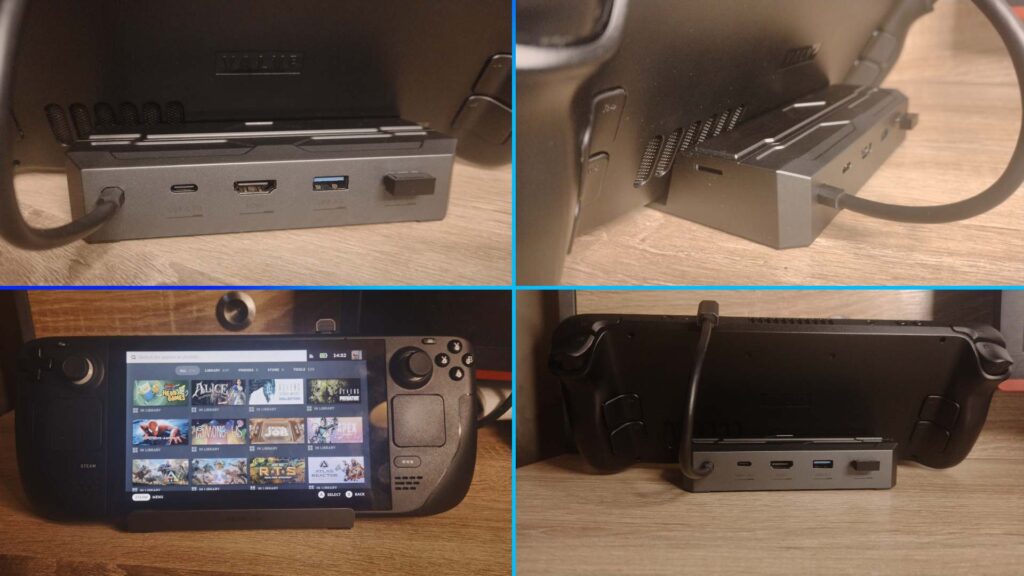
The three JSAUX docks I’ve tested are the HB0602, HB0702, and HB0604 models. In simpler terms, think of them as the five-in-one (HB0602), the seven-in-one (HB0702), and the M.2 six-in-one (HB0604). The choice here is essentially one with a few ports, one with several, or one with the option of hooking up an M.2 SSD.
Before we get into the nuts and bolts of how each handles, let’s take a look at what each one can do.
JSAUX 5-in-1 Dock (HB0602) – $29.99
- Metal Shell
- Two USB-A 2.0 Ports
- USB-C Charging port
- Ethernet Port (100 Mbps)
- HDMI 2.0 Port (4K@60Hz)
Upgraded JSAUX 7-in-1 Dock (HB0702) – $54.99
- Metal Shell
- Three USB-A 3.2 Ports
- USB-C Charging port
- Gigabit LAN Ethernet Port
- HDMI 2.0 Port (4K@60Hz or 1920×1080@120Hz)
- Display Port
JSAUX 6-in-1 M.2 Dock (HB0604) – $109.00 ($189.99 with a 1TB SSD)
- Metal Shell
- Two USB-A 3.2 Ports
- USB-C Charging port
- Gigabit LAN Ethernet Port
- HDMI 2.0 Port (4K@60Hz or 2K@120Hz)
- M.2 SSD Slot
JSAUX Steam Deck Dock Review
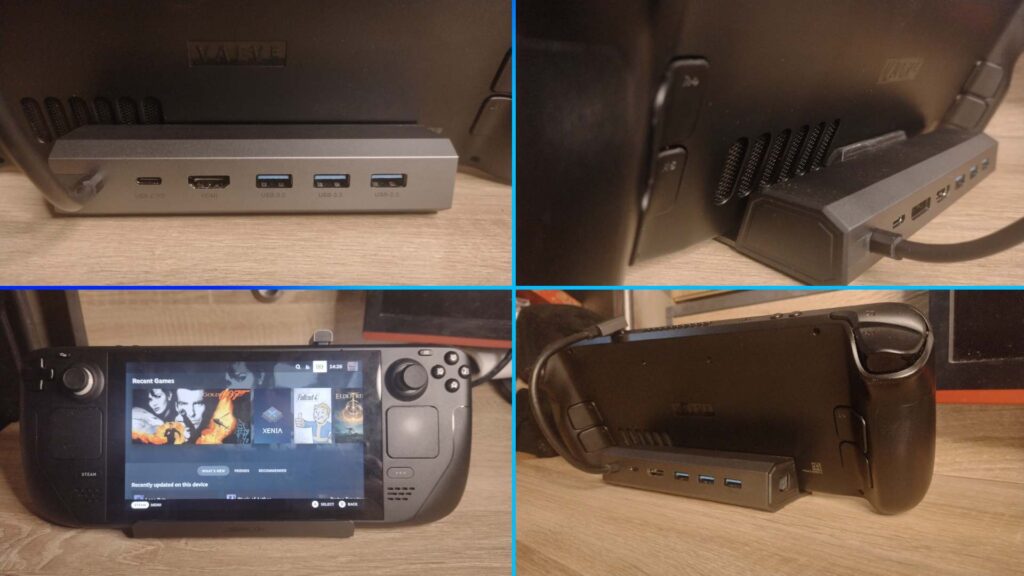
Four photos of the JSAUX HB702 dock.
All three JSAUX Steam Deck docks perform brilliantly in terms of what they’re designed for. The embedded USB-C cable plugs directly into the Steam Deck’s USB-C and the image from the Deck directly transfers onto the TV or monitor in gaming mode without any loss of quality.
Now, it’s worth noting Valve didn’t do a great job with the Deck’s docked mode, and you will eventually need to read up on how to set up the Deck to work with a TV correctly and how to set up image-scaling. It’ll work out the box, but there’s plenty of tinkering needed to get things how they should be.
That isn’t JSAUX’s fault, of course, but it’s worth noting the experience isn’t seamless, and that’s on Valve.
Still, once the JSAUX docks are set up, and the Deck itself has been configured correctly, all three docks work near flawlessly when it comes to outputting the signal. There are zero issues here. The docks work and do what they’re supposed to.
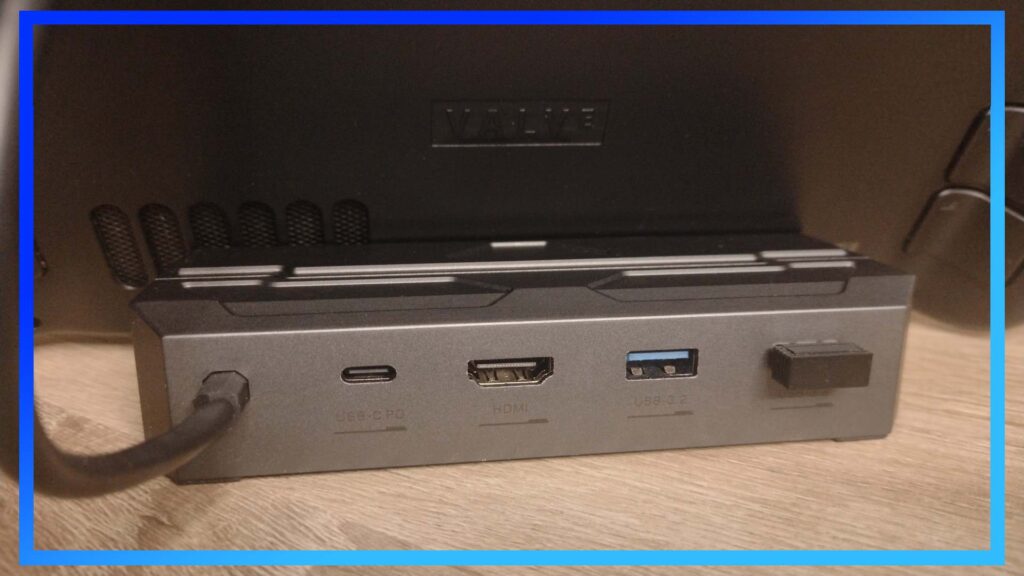
JSAUX M.2 HB0604 dock with a Bluetooth dongle plugged in.
They’re also exceptionally well-made. Each features a metal case that feels premium to the touch. There’s smart design at play, as well. With the HB0602 and HB0702 versions, the Steam Deck sits squarely in the middle, with nothing covering the vents meaning the airflow isn’t restricted.
With the M.2 HB0604 dock, placing the Deck in the center can overlay the vents, but the dock itself is angled slightly so the vents never press up against anything, leaving a layer of air between the dock and the vents. If you still worry about airflow with that dock, you can always shimmy the deck to the right somewhat so the vent area hangs over the dock slightly. Either works.
The smart design extends to the grip placement. On the inside of each dock are rubber grips that hold the Steam Deck firmly in place. The Deck can still be lifted in and out easily, but when it’s docked there’s little chance of the Steam Deck moving around.

JSAUX HB702 dock with the Steam Deck docked.
One area where the JSAUX docks differ from the official Steam Deck dock is in the USB-C cable. Valve opted to place a grip on the USB-C cable so you can kind of flip the cable out of the Steam Deck when you want to play in handheld mode. I personally don’t like Valve’s design here as I worry about how it’ll affect the internal USB-C socket. If the metal panel inside gets warped or damaged, that’s the Deck rendered kaput. With JSAUX’s simple plug-in cable, it’s down to the user to be careful and never force it in. If the Deck breaks, it’s down to the user rather than how the cable is designed.
JSAUX Steam Deck Dock Issues
Across all three docks I never had any hardware issues when it came to playing the Steam Deck on a TV, nor did anything short out or crash. That’s good.
In terms of the ports, I was able to connect a mouse and keyboard, or my wireless mini keyboard, without any issues. My wireless keyboard uses a Bluetooth dongle and that worked with all three docks no problem.
There is, however, a major problem with solid-state drives (SSDs). I’ve written extensively about how to set up hard drives and SSDs before, but the problem with the JSAUX docks seems to be intertwined with the Steam Deck’s power management.
The Deck takes 45 watts but it doesn’t use the full amount. That means you can hook up other devices and they’ll be powered by whatever power the Deck isn’t using. With me so far? Good.
But what JSAUX hasn’t been able to get around is what happens when the Deck needs more power for games. What appears to happen is anything extra – like USB accessories – will have their power revoked almost, leading to issues with the more power-consuming devices like SSDs.
JSAUX tried to get around this issue by supplying new and old customers with a 65-watt charger, but that hasn’t fixed the SSD issue with it disconnecting, at least it hasn’t for me.
What’s interesting is when I installed Windows on the SSD, everything ran fine. It’s only when the Steam Deck uses the SSD for the Steam Deck that disconnection and reading problems occur.
There’s every chance JSAUX could fix this in the future, or Valve for that matter, but at the moment, it’s hard to recommend the M.2 dock if you’re looking at it as an SSD dock. For TV gaming, sure, it’s a great dock. I’d just suggest holding off on plugging an SSD into it until these bugs have been thoroughly squashed.
Which Is the Best JSAUX Dock?
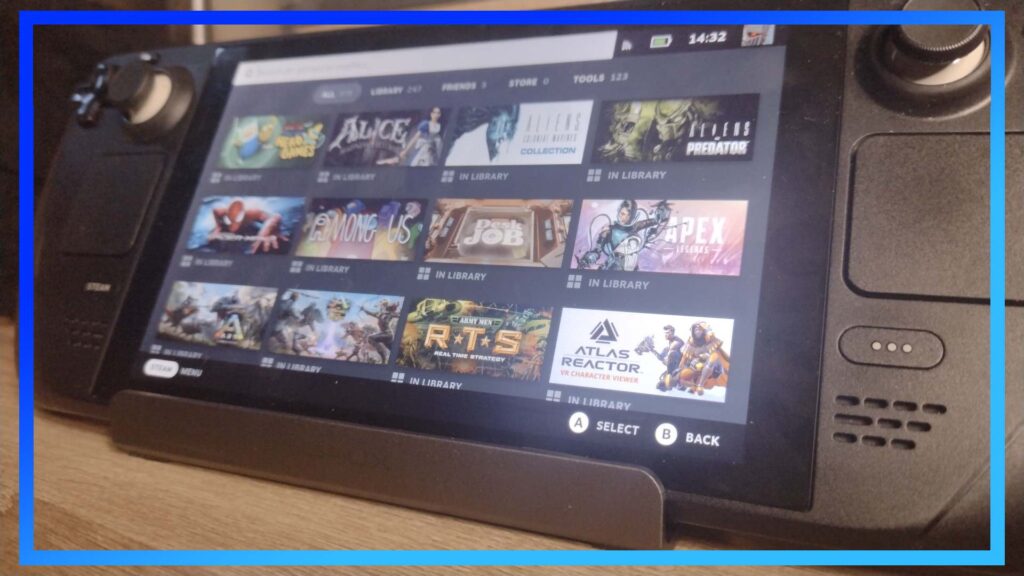
This all comes down to what you want to do. If you’re only looking to hook up a few devices (or none at all), and just want something high-quality to play the Steam Deck on a TV, the cheapest 5-in-1 Dock (HB0602) at $29.99 is a steal as far as I’m concerned. It does the job, looks and feels great, and definitely won’t break the bank.
For those looking to hook up multiple devices – a hard drive, keyboard, mouse, wireless headset, and so on – the 7-in-1 dock (HB0702) costs a little more at $54.99 but it’s well worth it. In fact, it’s the dock I’ve switched to using when I’m not reviewing games or hardware. You can’t get a better recommendation than that.
As for the M.2 Dock (HB0604), it’s harder to recommend because of the SSD issue. At $109.00 without an SSD, it should work flawlessly and it doesn’t. That’s not to say it’s a bad dock by any means, and the issues aren’t caused by JSAUX according to them. But the fact remains, I couldn’t get an SSD to work without any problems. Others have, I haven’t, and I can only give an honest review based on my experience.
JSAUX Dock vs Offical Steam Deck Dock
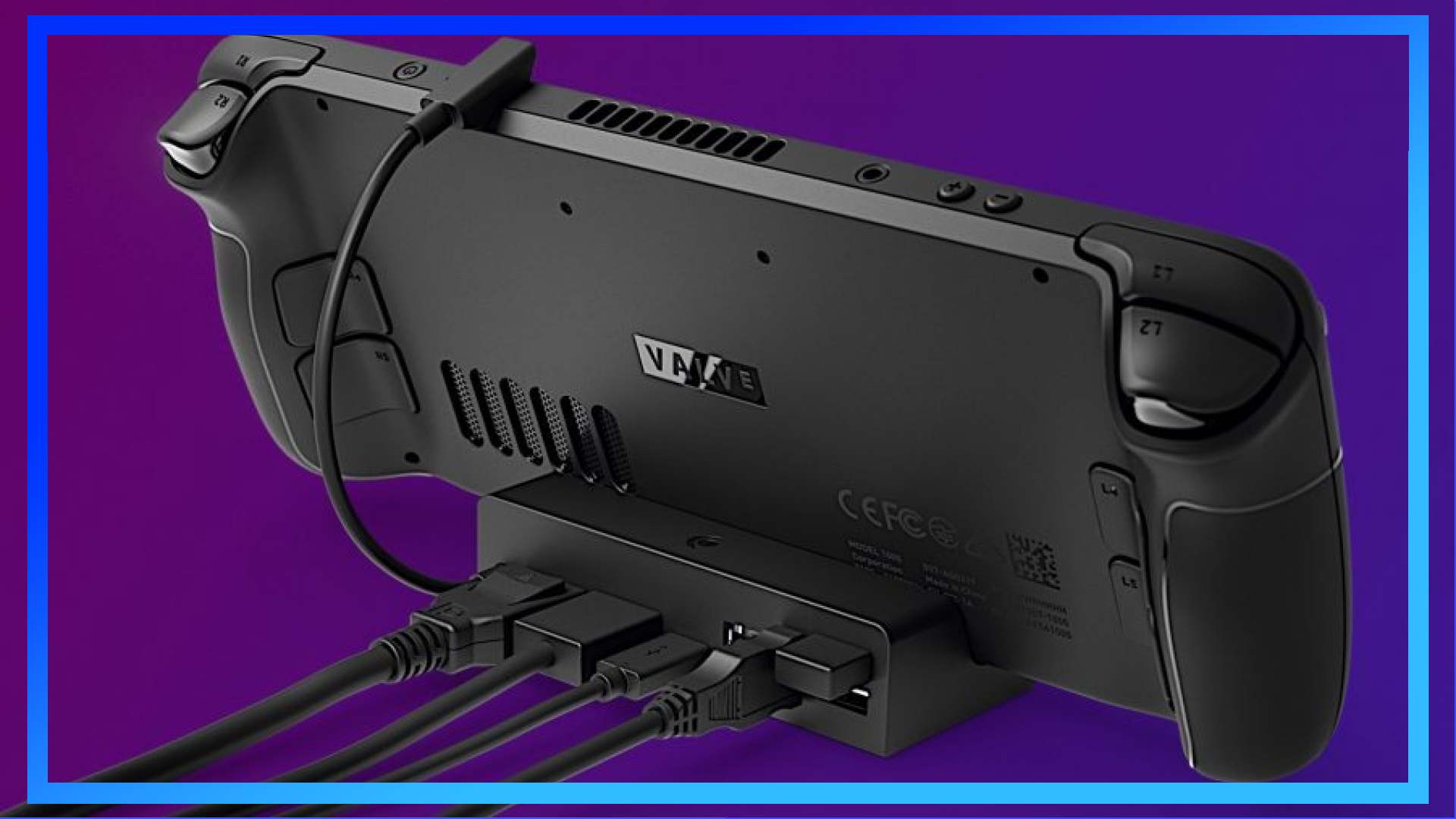
There isn’t enough in the official Steam Deck dock that makes it a smarter purchase over a brand like JSAUX. At $89.99, sure, the design may be more appealing to some but that’s a fairly pricey expenditure on top of an already expensive console.
Aside from the shape, port layout, and design, the main hook with the official dock is that it can receive firmware updates. That’s great and all, but is it enough to justify the extra cost at this point in time? Not really. Especially when the world is trying to save money.
This could change in the future once more updates are released, but right now the official dock is hard to recommend over third-party equivalents like JSAUX.
Final Ranking
- Upgraded JSAUX 7-in-1 Dock (HB0702)
- JSAUX 5-in-1 Dock (HB0602)
- JSAUX 6-in-1 M.2 Dock (HB0604)
Conclusion

After spending time reviewing each of the JSAUX docks, I’ve come away impressed. They’re well-made, feel great to the touch, and do what they’re supposed to.
The M.2 is disappointing, even though it still works great as a dock, but the HB0602 and HB0702 are easy to recommend without any caveats.
And credit where it’s due, the Steam Deck is still relatively new, so for JSAUX to create an affordable product that ticks all the boxes so soon after launch is impressive.
In short, if you’re after a Steam Deck dock and don’t want to pay silly prices, JSAUX is the way to go.

